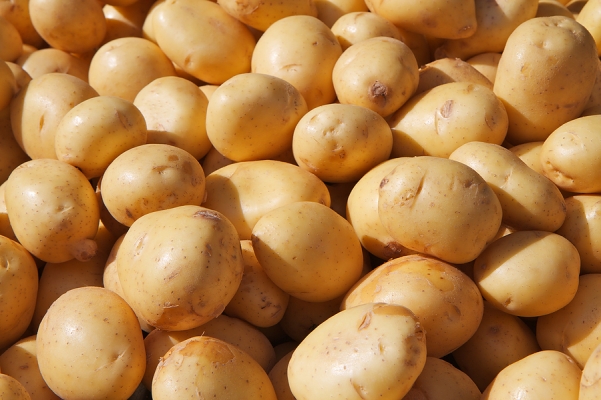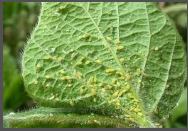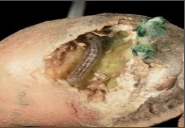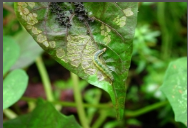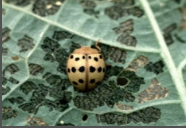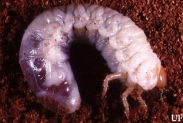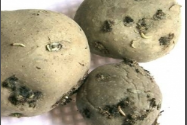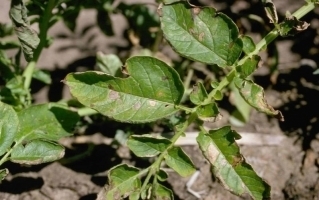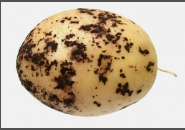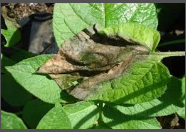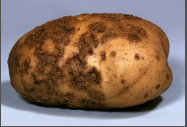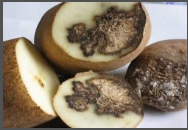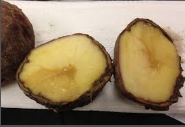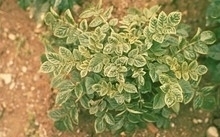Kufri Ashoka: It is developed by CPIU, Shimla and suitable for cultivation in Bihar, Haryana, Uttar Pradesh and West Bengal. Plant is of medium height with medium thick stem. It gets mature in 70-80 days. Tubers are of large oval shape, white color with smooth skin. It is susceptible to late blight.
Kufri Badshah: Plants are tall with 4-5 stems per plant. Tubers are of large to medium, oval shape with dull white flesh. Tubers are tasty with good flavor. It matures in 90-100 days. It is tolerant to frost, resistant to late blight, early blight.
Kufri Bahar: Plants are tall with thick stem, 4-5 stem per plant. Tubers are of large, white, round to oval shape and flesh is of white color. It mature in 90-100 days and gives yield of 100-120 qtl/acre. Its keeping quality is average. It is resistant to late blight, early blight and leaf roll etc.
Kufri Chipsona 2: Plants are of medium tall with few stems. Foliage is of dark green and flowers are of white color. Tubers are of white, medium size, round, oval shape with smooth skin. Gives average yield of 140 qtl/acre. It is resistant to late blight. It is highly suitable for making chips and french fries.
Kufri Chipsona 1
Kufri Chipsona 3: Medium duration variety ready to harvest in 100-110 days. Gives average yield of 120-140 qtl/acre.
Kufri Jawahar: Plants are short, erect and compact with few stems, stem is thick. Foliage is of light green color. Tubers are of medium sized, round-oval shape with smooth skin. It is early maturing variety and ready to harvest in 80-90 days. It gives yield of 160 qtl/acre. It is not suitable for processing. It is resistant to late blight.
Kufri Pukhraj: Plants are tall with medium thick stems, stems are few. Tubers are of white, large and oval shape with smooth skin. It matures in 70-90 days and gives average yield of 160 qtl/acre. It is resistant to early blight and not suitable for processing.
Kufri Sutlaj: Plants are medium compact and thick stem. Foliage is of gray green color. Tubers are large size with oval shape and smooth skin. It matures in 90-100 days with average yield of 160 qtl/acre. It has good consumer quality, it easy for cooking with mild flavor. It is not suitable for processing.
Kufri Anand: Medium duration variety gives resistant to late blight and frost. Gives average yield of 140-160 qtl/acre.
Kufri Pushkar: Medium duration variety gives average yield of 120-140 qtl/acre.
Other states variety
Kufri Giriraj, Kufri Himalini, Kufri Himsona, Kufri Giridhari, kufri Jyoit, Kufri Shailja.
Kufri Garima, Kufri Gaurav, Kufri Sadabahar, Kufri Khyati

